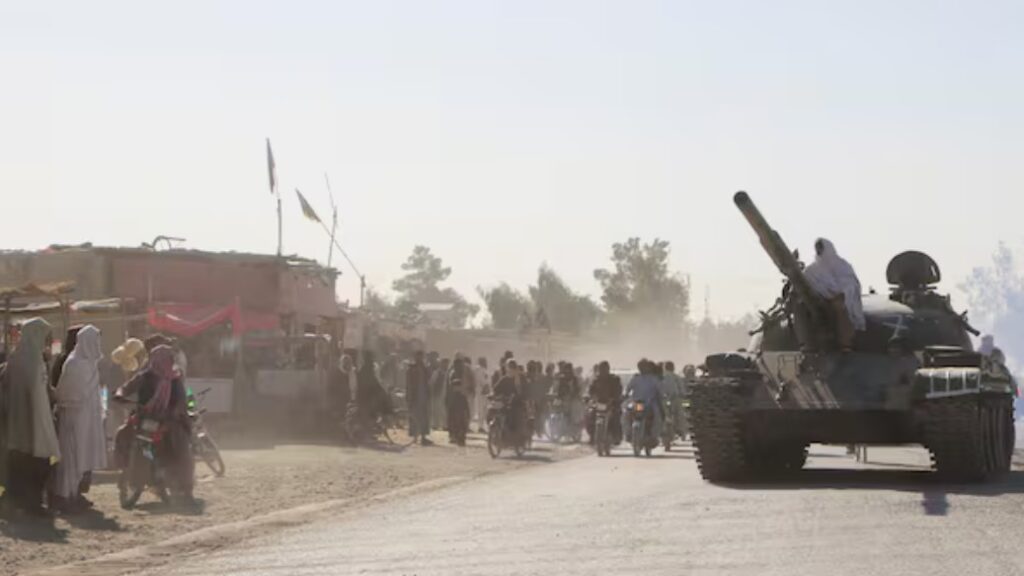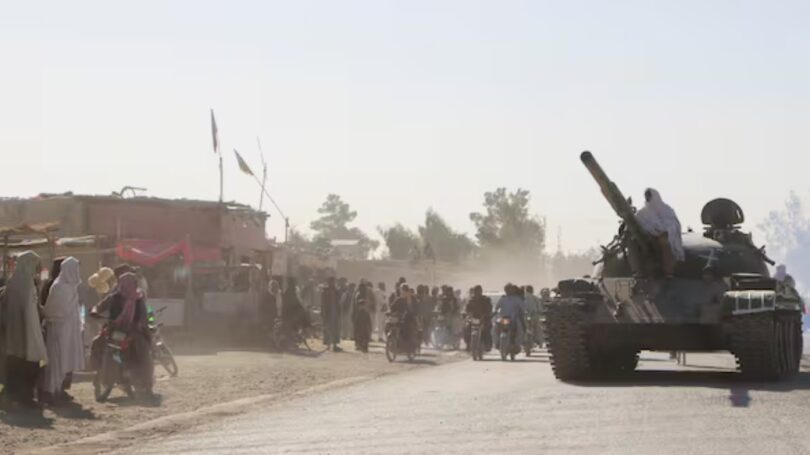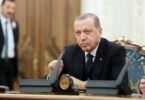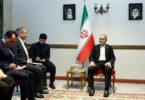Executive Summary
On 15 October 2025, Pakistan and the Taliban-led government in Afghanistan complied to a 48-hour ceasefire after weeks of escalating border clashes. The brief truce came post Pakistani airstrikes in Kandahar, Kabul and Spin Boldak, targeting Taliban-held positions allegedly harboring Tehrik-i-Taliban Pakistan (TTP) militants. This can be affirmed as a serious deterioration of the already crumbling Pak-Afghan relations since the Taliban’s return to power in 2021. This analysis explores the evolution of the crisis, its underlying causes, regional implications, and possible policy responses.
- Background: The Road to Conflict (2021–2025)
Post the Taliban’s takeover of Kabul in August 2021, Pakistan viewed the development as its strategic success. However, by mid-2022, the notion soon faded with the resumption of the TTP attacks within Pakistan. Islamabad accused the Taliban of providing safe havens to the anti Pakistan militants. Kabul denied the allegations. From 2023 onward, the hostility between the two nations escalated through cross-border skirmishes which culminated in Pakistan’s airstrikes in October 2025.

- The October 2025 Ceasefire
On 15 October 2025, both Pakistan and Afghanistan agreed to a 48-hour ceasefire starting at 1800 hrs. Pakistan time. The ceasefire followed three days of intense fighting in border areas, with Pakistan reporting 23 soldiers killed and 29 wounded. The Taliban condemned Pakistani airstrikes as violations of sovereignty, while Islamabad described them as defensive operations against cross-border terrorism.
- Structural Drivers of the Conflict
The core issue fueling the conflict is the presence of the TTP in Afghanistan. Pakistan views the TTP as a threat to its internal security, while the Taliban regard the group as a fraternal movement with tribal and ideological ties. Additionally, Pakistan’s diminishing influence over Kabul and domestic political pressures contribute to its more aggressive stance. Taliban’s reluctance to take actions against the TTP has given impetus to Pakistan’s growing security concerns, intensifying bilateral tensions. Each border incident serves as escalating rhetoric on both sides, perpetuating a cycle of blame rather than cooperation.
- Regional and International Implications
The October clashes have seen break down in humanitarian access and border trade. There is a mass displacement of civilians in Balochistan and Kandahar. Regional actors including China, Qatar, and Saudi Arabia have urged restraint. India’s quiet engagement with the Taliban has added a new strategic layer, complicating Pakistan’s regional calculus. China’s interest in stability, with its Belt and Road investments in mind, makes it a potential mediator.
- Policy Implications for Pakistan
Pakistan may face regional isolation if it perpetuates its coercive attitude rather than relying on cooperative policy methods. It has failed to prioritize structured counterterrorism dialogue, and any form of multilateral diplomacy involving regional stakeholders.
- Prospective Scenarios (Late 2025 – 2026)
Scenario 1: Stabilization through Dialogue — Ceasefire evolves into structured bilateral talks under Chinese or Qatari mediation.
Scenario 2: Prolonged Tensions — Ceasefire lapses, low-intensity clashes and TTP attacks continue.
Scenario 3: Escalation — Renewed military confrontation risks regional instability and humanitarian fallout.
- Conclusion
The October 2025 ceasefire represents a temporary break rather than any form of resolution. The Pakistan–Taliban relationship is now imbued with mistrust and conflicting national priorities. Sustainable peace will require institutionalized dialogue, counterterrorism cooperation, and regional guarantees to prevent future escalations.
Policy Recommendations
Priority Area | Recommended Action | Timeline | Responsible Party |
De-escalation | Extend ceasefire through OIC or Chinese mediation | Oct–Nov 2025 | Pakistan MFA, Afghan MoFA |
Border Security | Launch joint monitoring and communication hotline | 3 months | Defense Ministries |
Counterterrorism | Create trilateral counterterrorism cell (Pakistan–Afghanistan–China) | Early 2026 | Regional partners |
Economic Recovery | Reopen Chaman & Torkham crossings with trade safeguards | Dec 2025 | Customs & Border Authorities |
Confidence Building | Initiate Track-II dialogue with tribal elders and civil society | Ongoing | NGOs & Regional Forums |
More on the conflict between Afghanistan and Pakistan:
US-Taliban Scrimmage over the Afghan Bagram Air base: https://www.thestrategicperspective.org/us-taliban-scrimmage-over-the-afghan-bagram-air-base/
India-Afghanistan Reconnect: https://www.thestrategicperspective.org/india-afghanistan-reconnect/
Internet Shutdown in Afghanistan Threatens Women’s Education and Human Rights: https://www.thestrategicperspective.org/internet-shutdown-in-afghanistan-threatens-womens-education-and-human-rights/
India sends fresh aid to Afghanistan via Chabahar: https://www.thestrategicperspective.org/india-sends-fresh-aid-to-afghanistan-via-chabahar/
Pakistan’s Operation Sarbakaf in Khyber Pakhtunkwa: https://www.thestrategicperspective.org/pakistans-operation-sarbakaf-in-khyber-pakhtunkwa/
Munir’s Anti-India prattle and blame games: https://www.thestrategicperspective.org/munirs-anti-india-prattle-and-blame-games/
Juggling the American Eagle and the Sino Dragon: https://www.thestrategicperspective.org/juggling-the-american-eagle-and-the-sino-dragon/
Islamic State Khorasan Province (ISKP) declares war on Pro Independence Baloch groups: https://www.thestrategicperspective.org/islamic-state-khorasan-province-declares-war-on-pro-independence-baloch-groups/










